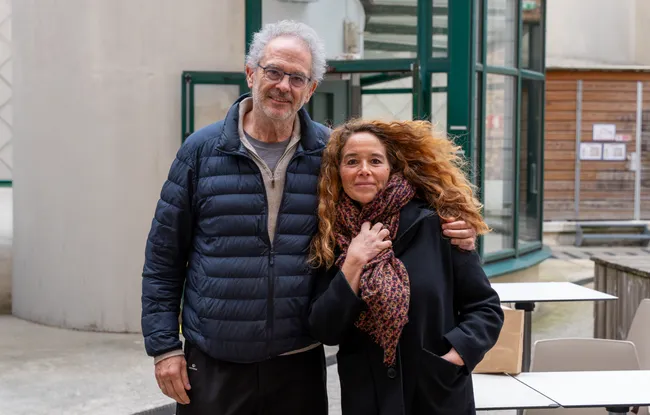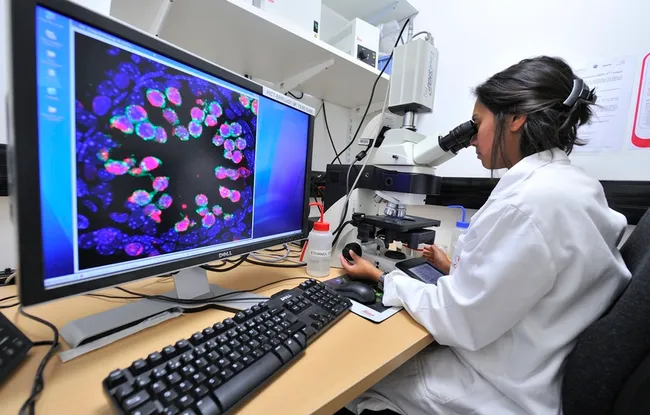- Home >
- Institut Curie News >
- How do our cells pass on their epigenetic markers?
Using innovative experimental approaches, Raphaël Margueron’s team at Institut Curie sheds light on the mechanisms governing the “epigenetic memory” of our cells. Published in Nature Genetics on November 15, 2021, this study will provide a better understanding of the action of certain epi-drugs used in oncology.
The diverse cells that make up our bodies, despite containing the same genetic markers, are able to maintain over a long period of time the distinct, specialized functions that they acquired during development. Thus our cells retain the memory of the status - active or inactive - of each gene within a given cell type. This status (active or not) represents epigenetic information that depends mainly on the action of factors present in the nucleus (transcription factors diffusing freely within the nucleus) and/or chemical alterations of chromatin at the genes themselves. But how is this type of epigenetic information passed on when cells divide?
Using high-throughput sequencing techniques and targeted experiments with CRISPR/Cas9 tools, Raphaël Margueron’s team at Institut Curie (Mechanisms of Repression by Polycomb Group Proteins/CNRS/Inserm/Institut Curie) explored the mechanisms by which this epigenetic memory can be passed on by studying Polycomb complexes (and in particular the complex including EZH2) which are involved in specific chromatin alterations. Up until now, the scientific community assumed that very specific molecular complexes - in particular Polycombs - made a sort of “photocopy” of the chromatin alterations between each division. Today, the research conducted at Institut Curie calls this assumption into question and proposes a brand new model.
Our results confirm the role in this epigenetic memory of Polycomb proteins, which are found in a large number of species and which are deregulated in a certain number of cancers. However, we strongly challenge the underlying mechanism that has been surmised by specialists for many years
Explains Daniel Holoch, post-doctoral researcher at Institut Curie and leading author of the study.
The researchers’ observations suggest that the epigenetic memory linked to Polycomb proteins is based on a competition between transcription factors and chromatin alterations. This new model of regulation explains how the cell manages to durably change the status of a gene in response to a temporary signal. The scientists have elucidated more precisely the function of certain Polycomb proteins in this process, including the EZH2 enzyme.
EZH2 is an important therapeutic target in oncology since the enzyme’s inhibitors are used to treat lymphoma. These latest results, therefore, shed new light on the long-term action of epi-drugs.
In order to understand whether the epigenetic memory of the state of expression of a gene is the result only of the action of transcription factors within the nucleus, or on the contrary depends on molecular processes acting locally, cells expressing a gene of interest were fused with others in which this same gene was inactive. If the expressed alleles lead to activation of initially silent alleles, this means that the regulation of memory is due to transcription factors. If, on the contrary, each allele preserves its initial state, we can deduce that the epigenetic memory is physically associated with the gene. In the image above, the cell nucleus is shown in blue, and the cytoskeleton in red. The presence of a single nucleus per cell shows that cell fusion has taken place as expected.
|
Reference : Holoch, D., Wassef, M., Lövkvist, C. et al. A cis-acting mechanism mediates transcriptional memory at Polycomb target genes in mammals. Nat Genet (2021). https://doi.org/10.1038/s41588-021-00964-2 |
Research News
Discover all our news
Celebration
The Immunity and Cancer research unit (U932) celebrates its twentieth anniversary
12/12/2025
Artificial Intelligence
08/12/2025




